
Gurgaon ‘Traditional Butter Chicken’
Posted: Mon Jun 14 2010
Ginger, turmeric, cardamom, nutmeg, cinnamon and cloves – spices commonly used in curries – are known to make diners break a sweat, boost metabolism and whet the appetite. What’s more, these same spices can also help digestion and take the edge of exhaustion – making foods that use them, such as curry – an ideal meal to help avoid an energy low-tide caused by the fickle temperatures that prevail as spring turns to summer. Curries, of course, come in all different forms, including home cooked varieties, Thai curries and various European varieties (to name but a few). Time Out Tokyo checked out Indian curries – or more specifically, Indian style chicken curries from five different Indian restaurants and below are our best 5 picks to get your fill.
Gurgaon (Ginza)
The chicken curry of choice at Gurgaon, a relaxed Indian restaurant that offers a variety of North Indian fare, is their ‘Traditional Butter Chicken’ (¥1,470) – a curry that includes tandoori chicken pieces, made using meat from domestically reared young chickens, smothered in a rich and creamy tomato-based gravy made using a variety of spices in combination with kasoori methi, a dry herb more commonly known as fenugreek. As an ideal complement to this wonderful curry, consider ordering the ‘Cheese Kulcha’, melted cheese wrapped in a type of garlic-flavoured Indian flatbread similar to naan.
(Full details & map)
Indian Curry Kama (Jimbocho)
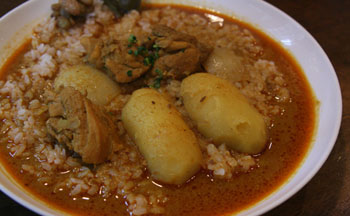
Kama’s particular special is its chicken curry. Containing two whole potatoes, and generous portions of chunky chicken, it is made with a smooth roux that perfectly complements Japanese rice. To make the soup stock, chicken stock bones and beef tendons are stewed for around two hours along with vegetables like cabbage, onions, carrots and ginger. The richness of the meat is tempered by the gentle flavour of the vegetables, and the finished product has a transparency unhindered by its spices. The addition of fruits like apples and mangoes also gives the dish a hint of sweetness. Nevertheless, with a single taste, what you’ll realise is that it’s a pretty spicy dish. But even with all the heat, it’s irresistible. A plate piled with koshihikari rice, combining perfectly with the curry, will disappear before you know it. One key is that the potatoes are cut into large blocks so their sweetness can match the spiciness of the roux.
(Full details & map)
Anjuna (Takahatafudo)

The menu, which tends to centre on South Indian fare (which is well received in Japan), includes over twenty-five different varieties of curry and a variety of tandoori cuisine. A particular favourite here is the restaurant’s ‘A-Set’ dinner course, which, in addition to a keema curry and a chicken curry that comes complete with chicken on the bone, also includes a portion of tandoori chicken and a sheek kebab. The chicken curry, made from simmered down spices, chicken stock and onions, is especially smooth and goes great with rice. Rather than ground spices, this particular curry is made with whole spices, resulting in a blend that, although spicy, has no unpleasant or lingering hot aftertaste. Contrasting the spiciness of the chicken curry is the mild, subdued flavour of the green pea and minced chicken keema curry, which, along with its own mixture of mild-spices, has a wonderful chickeny flavour. Plus, the tandoori chicken, which has been charcoal-grilled at a temperature of approximately 400 degrees, is both juicy and full of flavour.
(Full details & map)
Nair’s Restaurant (Higashi-Ginza)
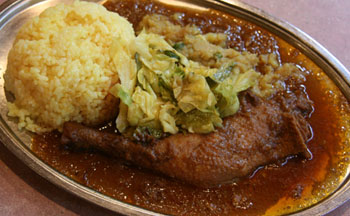
Over 90% of the customers who come here opt for the restaurants famous ‘Murugi Lunch’, a hearty meal that includes mash potato, boiled cabbage and a curry that’s been simmered down along with a leg of chicken (which contains meat so soft that it practically falls off the bone the moment you pick it up) for an incredible seven hours. You’ll probably want to tuck in as soon as arrives at your table, however, the recommended way to enjoy this fantastic meal is to grab a spoon and mix everything – which includes a portion of turmeric flavoured rice made with Iwate prefecture rice – together. You’ll be left with a mix of flavours that melt together to create a taste sensation that perfectly complements both the spicy curry roux and the sweet starch of the rice. Upon their first visit, many customers who haven’t been forewarned of the practice are often taken aback by the suggestion of mixing this curry all together; however, upon sampling the results, it’s not hard to understand why this is such an incredibly popular dish. Don’t be fooled by the name; because although this unique curry is referred to as a ‘lunch’, it can in fact be ordered at anytime throughout the day.
(Full detail & map)
Sitaara (Omotesando)
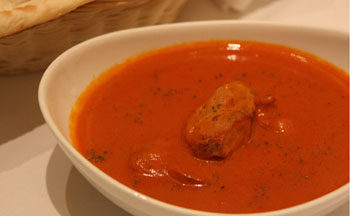
Sitaara’s most popular dish is its Butter Chicken, a dish that any curry fan is sure to have tried before, and a staple of Northern Indian cuisine. To create it, they first roast pieces of boneless chicken in a tandoor oven, and then stew it in a vividly coloured tomato-based sauce. The addition of honey ensures that the fresh sweet and sour tastes of the tomato are fully brought out, while also retaining a satisfyingly rich flavour. Barely any oil is used in the preparation of Sitaara’s butter chicken curry, so not only is it delicious, but – happily – it’s also a relatively healthy choice.
(Full details & map)
Tweets
- About Us |
- Work for Time Out |
- Send us info |
- Advertising |
- Mobile edition |
- Terms & Conditions |
- Privacy policy |
- Contact Us
Copyright © 2014 Time Out Tokyo












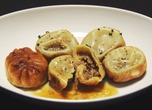
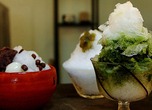
Add your comment